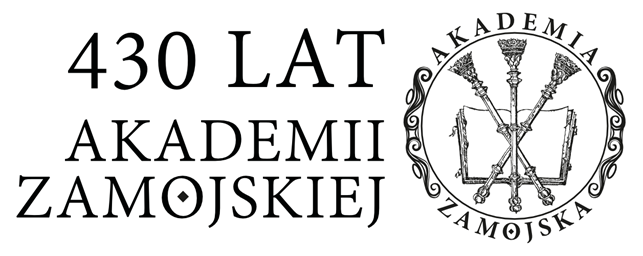Antonelli, C., P.P. Patrucco, and F. Quatraro. 2011. “Productivity Growth and Pecuniary Knowledge Externalities: An Empirical Analysis of Agglomeration Economies in European Regions.” Economic Geography 87 (1): 23–50. doi: 10.1111/j.19440-8287.2010.01104.x.
DOI: https://doi.org/10.1111/j.1944-8287.2010.01104.x
Asheim, B.T., and M.S. Gertler. 2005. “The Geography of Innovation: Regional Innovation Systems.” In The Oxford Handbook of Innovation, edited by J. Fagerberg, D.C. Mowery and R.R. Nelson, 291–317. Oxford – New York: Oxford University Press.
DOI: https://doi.org/10.1093/oxfordhb/9780199286805.003.0011
Autio, E., M. Kenney, P. Mustar, D. Siegel, and M. Wright. 2014. “Entrepreneurial Innovation: The Importance of Context.” Research Policy 43 (7): 1097–1108. doi: 10.1016/j.respol.2014.01.015.
DOI: https://doi.org/10.1016/j.respol.2014.01.015
Azar, G., and F. Ciabuschi. 2017. “Organizational Innovation, Technological Innovation, and Export Performance: The Effects of Innovation Radicalness and Extensiveness.” International Business Review 26 (2): 324–336. doi: 10.1016/j.ibusrev.2016.09.002.
DOI: https://doi.org/10.1016/j.ibusrev.2016.09.002
Camagni, R., and R. Capello. 2013. “Regional Competitiveness and Territorial Capital: A Conceptual Approach and Empirical Evidence from the European Union.” Regional Studies 47 (9): 1383–1402. doi: 10.1080/00343404.2012.681640.
DOI: https://doi.org/10.1080/00343404.2012.681640
Carayannis, E.G., Y. Goletsis, and E. Grigoroudis. 2017. “Composite Innovation Metrics: MCDA and the Quadruple Innovation Helix Framework (in press, corrected proof).” Technological Forecasting and Social Change.
DOI: https://doi.org/10.1016/j.techfore.2017.03.008
Ciocanel, A.B., and F.M. Pavelescu. 2015. “Innovation and Competitiveness in European Context.” Emerging Markets Queries in Finance and Business 2014, Emqfb 2014 32: 728–737. doi: 10.1016/S2212-5671(15)01455-0.
DOI: https://doi.org/10.1016/S2212-5671(15)01455-0
Collier, D. 1993. “The Comparative Method.” In Political Science. The State of the Discipline II, edited by A.W. Finifter, 105–120. Washington, DC: American Political Science Association.
Cooke, P. 2004. “Competitiveness as Cohesion: Social Capital and the Knowledge Economy.” In City Matters. Competitiveness, Cohesion, and Urban Governance, edited by M. Boddy and M. Parkinson. Bristol: Policy Pess.
DOI: https://doi.org/10.46692/9781847425911.010
Cooke, P., B. Asheim, R. Boschma, R. Martin, D. Schwartz, and F. Tödtling. eds. 2011. Handbook of Regional Innovation and Growth. Cheltenham, UK: Edward Elgar.
DOI: https://doi.org/10.4337/9780857931504
Damanpour, F. 1996. “Organizational Complexity and Innovation: Developing and Testing Multiple Contingency Models.” Management Science 42 (5): 693–716. doi: 10.1287/mnsc.42.5.693.
DOI: https://doi.org/10.1287/mnsc.42.5.693
Damanpour, F., and D. Aravind. 2012. “Managerial Innovation: Conceptions, Processes, and Antecedents.” Management and Organization Review 8 (2): 423–454. doi: 10.1111/j.1740-8784.2011.00233.x.
DOI: https://doi.org/10.1111/j.1740-8784.2011.00233.x
Doloreux, D. 2002. “What We Should Know about Regional Systems of Innovation.” Technology in Society 24 (3): 243–263. doi: 10.1016/S0160-791X(02)00007-6.
DOI: https://doi.org/10.1016/S0160-791X(02)00007-6
Federico, G., G. Langus, and T. Valletti. 2017. “A Simple Model of Mergers and Innovation.” Economics Letters 157: 136–140. doi: 10.1016/j.econlet.2017.06.014.
DOI: https://doi.org/10.1016/j.econlet.2017.06.014
Ferreira, P.J.S., and A.T.M. Dionisio. 2016. “What Are the Conditions for Good Innovation Results? A Fuzzy-Set Approach for European Union.” Journal of Business Research 69 (11): 5396–5400. doi: 10.1016/j.jbusres.2016.04.144.
DOI: https://doi.org/10.1016/j.jbusres.2016.04.144
Fiss, P.C. 2011. “Building Better Causal Theories: a Fuzzy Set Approach to Typologies in Organization Research.” Academy of Management Journal 54 (2): 393–420. doi: 10.5465/Amj.2011.60263120.
DOI: https://doi.org/10.5465/amj.2011.60263120
Foddi, M., and S. Usai. 2012. “Regional Innovation Performance in Europe.” CRENoS Working Papers (2012/21): 1–36.
Grupp, H., and M.E. Mogee. 2004. “Indicators for National Science and Technology Policy. How Robust Are Composite Indicators?” Research Policy 33 (9): 1373–1384. doi: 10.1016/j.respol.2004.09.007.
DOI: https://doi.org/10.1016/j.respol.2004.09.007
Krakowiak-Bal, A., P. Burg, U. Ziemiańczyk, P. Trávníček, P. Junga, and T. Vítěz. 2016. “Innovativeness. Does the Territorial Typology Matters?” Infrastruktura i Ekologia Terenów Wiejskich 4 (4): 1937–1945.
Mas-Verdu, F., D. Ortiz-Miranda, and J.M. Garcia-Alvarez-Coque. 2016. “Examining Organizational Innovations in Different Regional Settings.” Journal of Business Research 69 (11): 5324–5329. doi: 10.1016/j.jbusres.2016.04.132.
DOI: https://doi.org/10.1016/j.jbusres.2016.04.132
Misangyi, V.F., and A.G. Acharya. 2014. “Substitutes or Complements? A Configurational Examination of Corporate Governance Mechanisms.” Academy of Management Journal 57 (6): 1681–1705. doi: 10.5465/amj.2012.0728.
DOI: https://doi.org/10.5465/amj.2012.0728
Ragin, C.C. 2000. Fuzzy-Set Social Science. Chicago: University of Chicago Press.
Ragin, C.C. ed. 2008. Redesigning Social Inquiry. Fuzzy Sets and Beyond. Chicago: University of Chicago Press.
Ragin, C.C., and P. Fiss. 2008. “Net Effects versus Configurations: an Empirical Demonstration.” In Redesigning Social Inquiry. Fuzzy Sets and Beyond, edited by C.C. Ragin, 190–212. Chicago: University of Chicago Press.
DOI: https://doi.org/10.7208/chicago/9780226702797.001.0001
Rihoux, B., P. Alamos-Concha, D. Bol, A. Marx, and I. Rezsohazy. 2013. “From Niche to Mainstream Method? A Comprehensive Mapping of QCA Applications in Journal Articles from 1984 to 2011.” Political Research Quarterly 66 (1): 175–184. doi: 10.1177/1065912912468269c.
DOI: https://doi.org/10.1177/1065912912468269
Roig-Tierno, N., J. Alcazar, and S. Ribeiro-Navarrete. 2015. “Use of Infrastructures to Support Innovative Entrepreneurship and Business Growth.” Journal of Business Research 68 (11): 2290–2294. doi: 10.1016/j.jbusres.2015.06.013.
DOI: https://doi.org/10.1016/j.jbusres.2015.06.013
Schneider, M.R., C. Schulze-Bentrop, and M. Paunescu. 2010. “Mapping the Institutional Capital of High-Tech Firms: a Fuzzy-Set Analysis of Capitalist Variety and Export Performance.” Journal of International Business Studies 41 (2): 246–266. doi: 10.1057/jibs.2009.36.
DOI: https://doi.org/10.1057/jibs.2009.36
Schumpeter, J.A. 1934. The Theory of Economic Development. An Inquiry into Profits, Capital, Credit, Interest, and the Business Cycle. Translated by R. Opie, Harvard Economic Studies. Cambridge, Mass: Harvard University Press.
Shearmur, R., C. Carrincazeaux, and D. Doloreux. eds. 2016. Handbook on the Geographies of Innovation. Northampton, MA: Edward Elgar Pub.
DOI: https://doi.org/10.4337/9781784710774
Veugelers, R. 2009. “Innovation, Growth, and Structural Reforms: What Role for EU Policies?” In The New Economics of Technology Policy, edited by D. Foray, 315–326. Cheltenham, UK; Northampton, MA: Edward Elgar.
Woodside, A.G. 2013. “Moving beyond Multiple Regression Analysis to Algorithms: Calling for Adoption of a Paradigm Shift from Symmetric to Asymmetric Thinking in Data Analysis and Crafting Theory.” Journal of Business Research 66 (4): 463–472. doi: 10.1016/j.jbusres.2012.12.021.
DOI: https://doi.org/10.1016/j.jbusres.2012.12.021
Zygmunt, A. 2014. “R&D Expenditures in Poland. Voivodship Perspective.” Barometr Regionalny. Analizy i Prognozy 12 (2): 13–20.
DOI: https://doi.org/10.56583/br.1048



 English
English
 Język Polski
Język Polski




